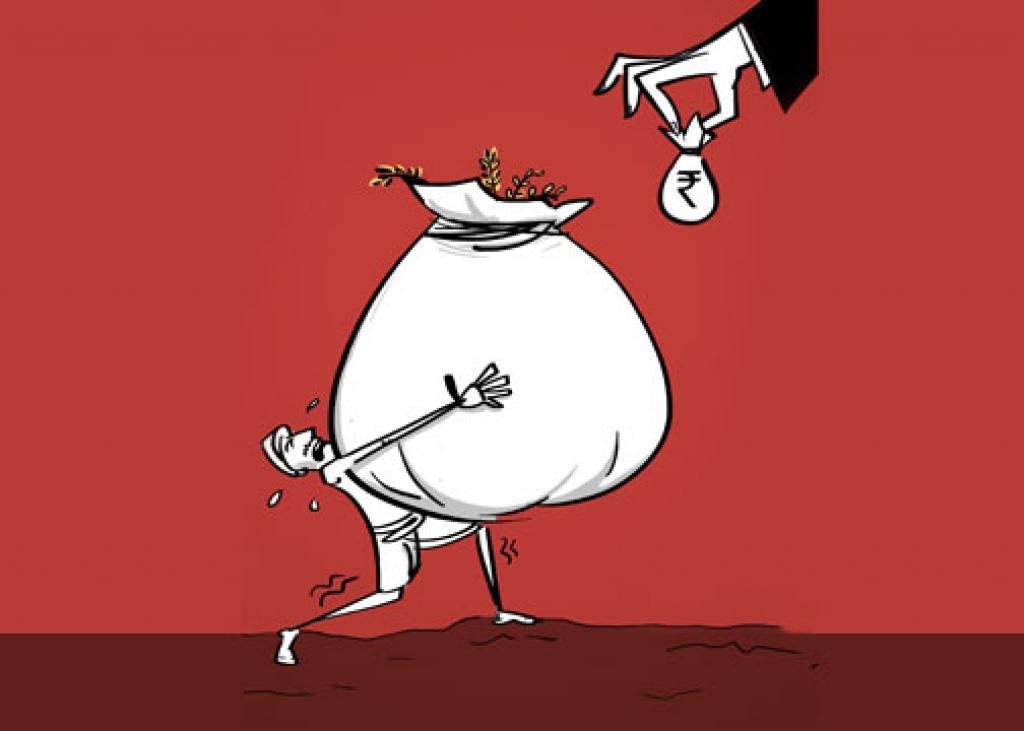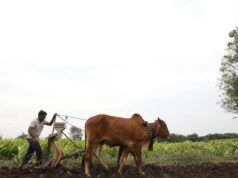Until recently, I would chuckle seeing my mother bargain with the vegetable vendors for a mere Rs. 2-3, but of late, I often find myself doing the same – only to chuckle again, but this time at the irony of it all. What changed? Ordinarily, a vegetable vendor refusing to reduce the price would be frustrating, making me question my competence as an adult. That is if I didn’t know any better. Fortunately (or unfortunately), now I do.
According to the Economic Survey of India 2018, the incomes of farmers in India have been stagnant since last three years bringing some kind of a morbid sense into the statistic of 45 farmers committing suicides every day in the country. Tomatoes, costing Rs 45-50 per kilogram at Delhi’s Azadpur mandi, could fetch their producers from neighbouring areas only Rs. 2-4 per kilogram. The Accidental Deaths & Suicides in India – 2010 Report by the National Crime Records Bureau, projects 15,964 farmer suicides in 2010 alone.
The Government of India introduced the Agricultural Produce Market Committee (APMC) Act in 1963- with a linchpin focus on eliminating the exploitation of farmers by middlemen. The Act guarantees establishment of regulated markets or ‘mandis’, wherein farmers could sell their produce at a reasonable price and in a transparent manner. Since agriculture is a state subject, the act empowered state governments to prescribe the quantities and producers of commodities as they deem fit, and designate markets and market areas where this regulated trade takes place.
However, the very purpose of the act has been made redundant, and arguably even counter-productive, over time. Illiterate or semi-literate farmers, who are not market savvy and cannot comprehend the multiplicity of taxes in place, are at the disposal of a cartel of middlemen and agents in these markets who have a license to operate. A state monopoly has been established over these markets since farmers are not allowed to sell their goods in the open market. These entry and operational barriers prevent competent outsiders from accessing these markets, enabling middlemen to entrench themselves further. As a result, an alternative market system does not exist and no encouragement is given to private entrepreneurs to invest in these markets.
How does the supply chain of agriculture work?
Farmers→ Small Traders (Kaccha)→Larger Trader (Pakka)→Commission agent→Wholesaler→ Retailer→Consumer
In the absence of a direct link with the consumers, the farmers are at the mercy of the middlemen who occupy the entire space between the production and the ultimate sale of the produce. This makes middlemen very powerful and the farmers often find themselves at a disadvantage despite being the producers. Monopoly is hazardous whether it is established by a public or a private entity. Since there are only limited agents in an APMC, it’s profitable for them to form a cartel and deliberately increasing the bids, pushing prices higher. Thus delinking the producers and consumers, deprives both- the farmers of better returns on their produce and the common people of fair pricing on their vegetables.
Over and above the license fee, rent of shops at these markets is quite high which prevents healthy and necessary competition which is a prerequisite to maintain quality and reasonable prices. At most places, only a group of village/urban elite operate in APMC. These high costs are usually passed down to the farmers, who end up benefiting very little and having to separately pay commission, marketing fee, APMC cess, and at times even VAT.
The Model legislation which came into being in 2003 to make APMCs more transparent has actually given rise to a conflict of interest, as the APMC, which is the operator, is also the regulatory authority. There is reluctance on part of state governments to reform the APMC legislation, as it generates huge revenues. Some states have created additional entry barriers by prescribing either high license fees for setting up such markets or minimum distance between private markets and APMC markets.
The APMC Act has primarily prevented the creation of competitive conditions in the distribution of commodities and of a national market for agricultural commodities. The kind of restrictive practices that are carried out in regulated markets is mostly not in favour of the farmers. There is an absence of adequate marketing facilities to the farmers both in public and private sector and literally no room for alternative marketing system.
One noticeable example of the benefits of limited government intervention is the success of dairy farming. Between 1970 and 2014, the share of livestock sector in the agricultural gross domestic product (AgGDP) increased from about 17% to approximately 29%, with livestock rearing playing an important role in ensuring food and income security of rural household (Birthal et al 2014). One of the major factors in the growth of the dairy sector in India is that this sector was granted much more autonomy compared to the agricultural sector. In the name of government support, the farmers are subjected to unreasonable restrictions.
Farmers need a conducive environment which allows them to have a say in the pricing of their produce in accordance with the demands of the consumers by interacting and trading directly in the market.Presently, the supply chain should be shortened to bring the producers as close to consumers as possible. Too many intermediaries can be a deterrent to a farmer, leaving them with an unfairly small return on their produce.
Additionally, better storage facilities would help build a farmer’s ability to store their produce as per the demand. In situations where a farmer knows that a few days or weeks down the line s/he is going to get a better price for her/his produce but is yet unable to store his/her grains in part due to the lack of adequate storage facilities in addition to the many restrictions which prevent such activities. These regulations, mostly aimed at the prevention of hoarding by middlemen who operate in cartels, in reality, is detrimental to the farmer. These middlemen will thrive whether you have APMC or not.
In order to combat the exploitation of farmers, we need to take active policy action to increase farm productivity, post-harvest technology, and better storage facilities. If we want the consumer to pay less and the farmer to gain more the role of private sector role has to be enhanced by setting up private mandis where farmers can come and sell their crops directly. Concurrently to ensure that farmers can fully utilise the benefits of this, entrepreneurship development should be encouraged along with better marketing skills to right the information asymmetry. You cannot be forcing a farmer to only sell in the government regulated markets.
All regulations put in place under the guise of ‘gareebi hatao’ (remove poverty) have only shackled to gareebi. Perhaps its time to try a different approach, one that empowers farmers by giving her or him better ownership of the fruits of their labour.
Post Disclaimer
The opinions expressed in this essay are those of the authors. They do not purport to reflect the opinions or views of CCS.






